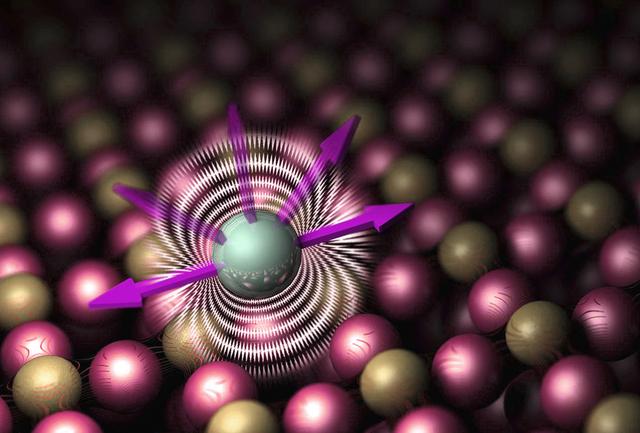(单词翻译:单击)
In 1910, Rutherford (assisted by his student Hans Geiger, who would later invent the radiation detector that bears his name) fired ionized helium atoms, or alpha particles, at a sheet of gold foil. To Rutherford's astonishment, some of the particles bounced back. It was as if, he said, he had fired a fifteen-inch shell at a sheet of paper and it rebounded into his lap. This was just not supposed to happen.
1910年,卢瑟福(在他的学生汉斯·盖格的协助之下。盖格后来将发明冠有他名字的辐射探测仪)朝一块金箔发射电离的氦原子,或称α粒子。盖格后来还成为一个忠实的纳粹分子,出卖了他的犹太同事,其中包括很多曾经帮助过他的人。令卢瑟福吃惊的是,有的粒子竟会反弹回来。他说,他就像朝一张纸发射了一发38厘米的炮弹,结果炮弹反弹到了他的膝部。这是不该发生的事。
After considerable reflection he realized there could be only one possible explanation: the particles that bounced back were striking something small and dense at the heart of the atom, while the other particles sailed through unimpeded. An atom, Rutherford realized, was mostly empty space, with a very dense nucleus at the center. This was a most gratifying discovery, but it presented one immediate problem. By all the laws of conventional physics, atoms shouldn't therefore exist.
经过冥思苦想以后,他觉得只有一种解释:那些反弹回来的粒子击中了原子当中又小又密的东西,而别的粒子则畅通无阻地穿了过去。卢瑟福意识到,原子内部主要是空无一物的空间,只有当中是密度很大的核。这是个很令人满意的发现。但马上产生了一个问题,根据传统物理学的全部定律,原子因此就不应该存在。


